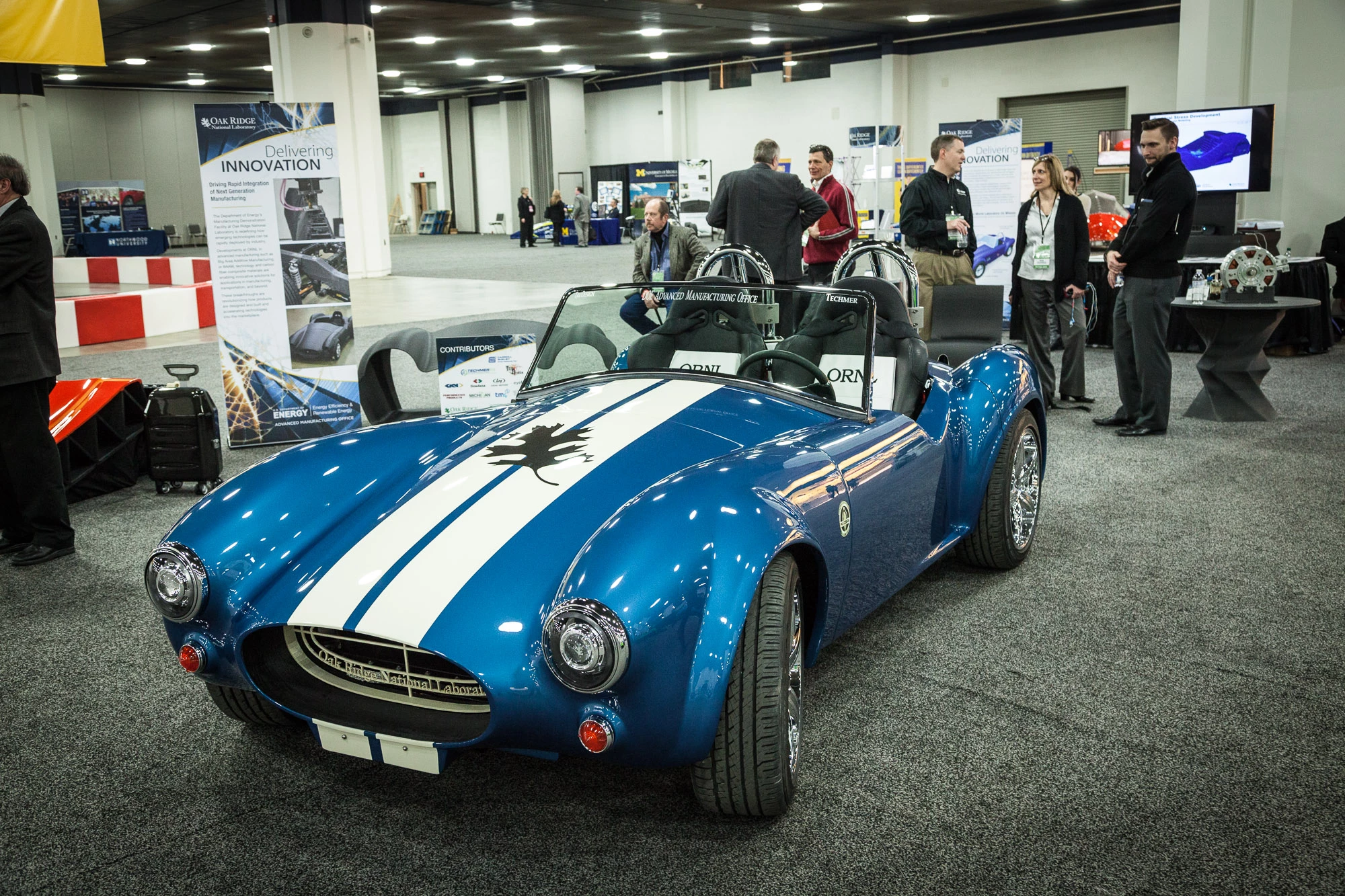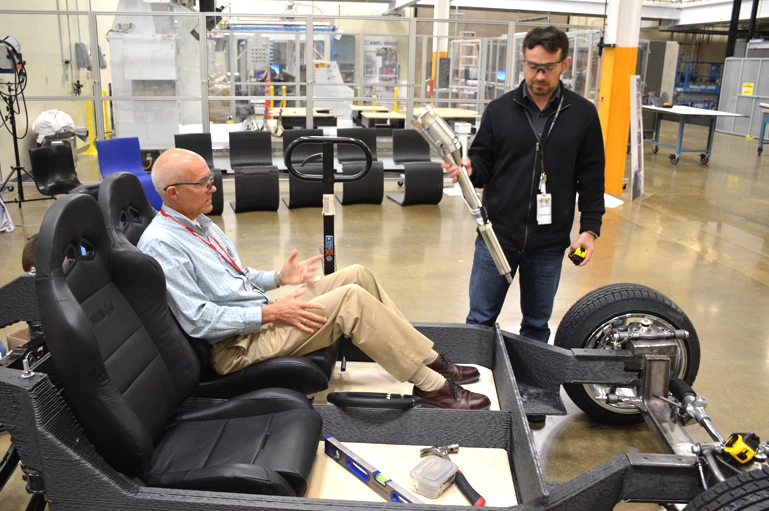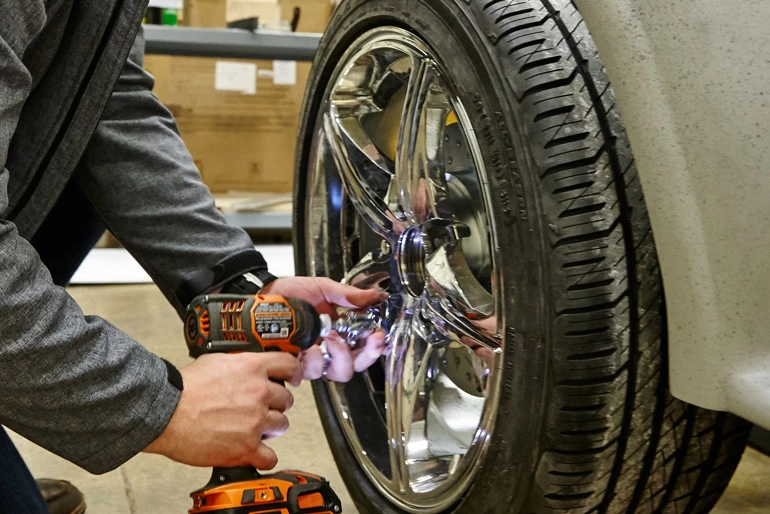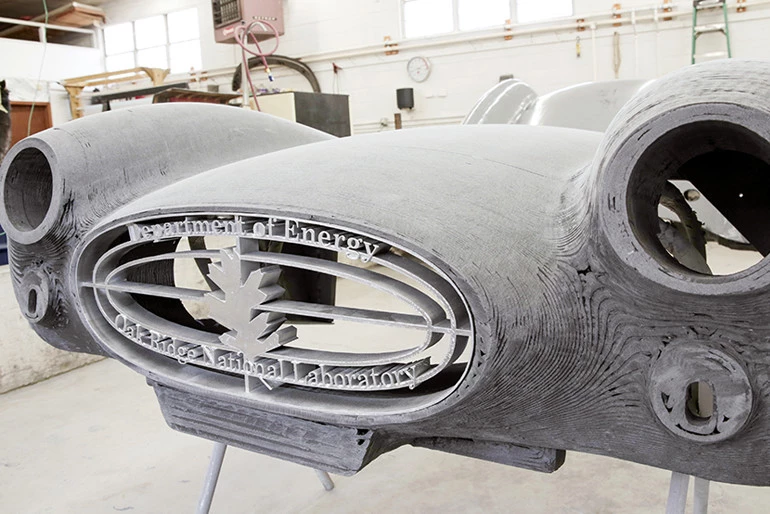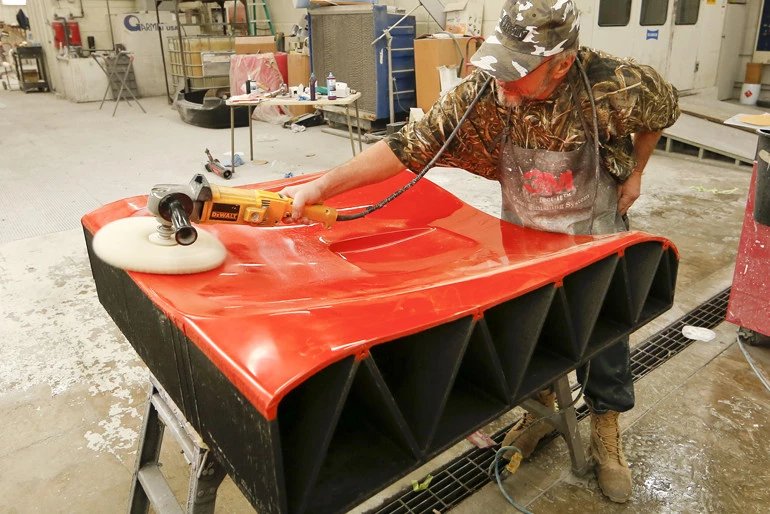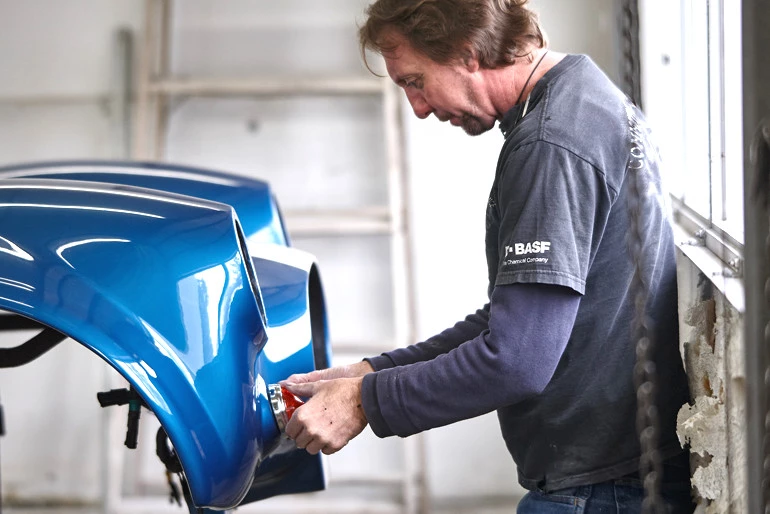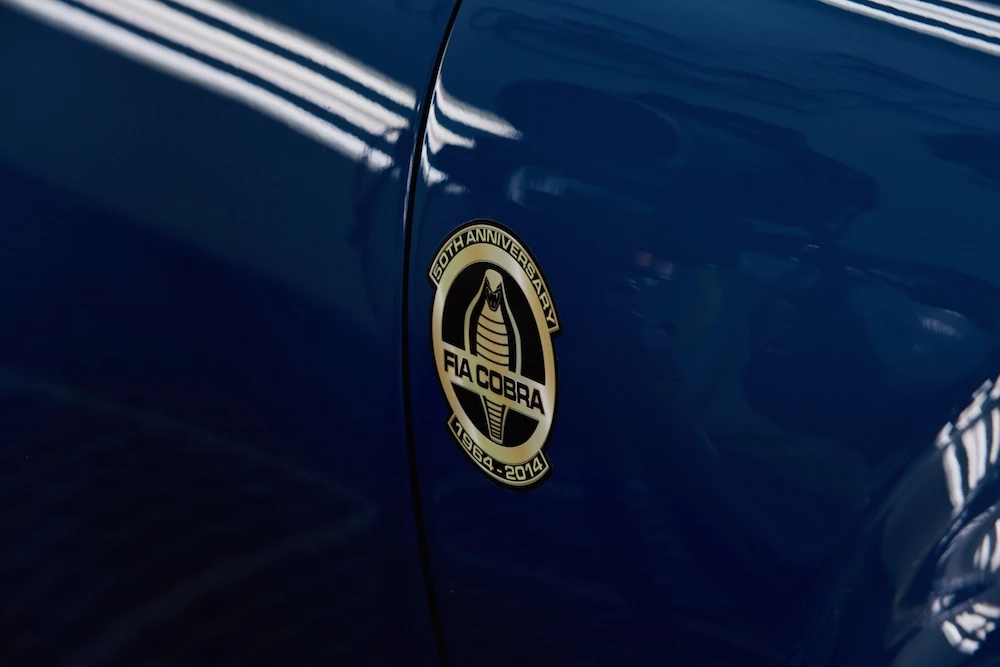It stands to reason that if you had a big enough 3D printer, one of the first things you might do is print a replica of a vintage 1965 Shelby Cobra sportscar, and that's what the Oak Ridge National Laboratory (ORNL) did for the 2015 North American International Auto Show (NAIAS) in Detroit. The result of a project that took only six weeks from conception to finished product, the vehicle not only celebrates the Shelby Cobra's 50th anniversary, but also acts as a demonstration of modern additive manufacturing and rapid prototyping technology.
From the outside, the 1,400-lb (635-kg) ORNL Cobra looks like a well-made Shelby replica with an updated digital display, but it hides 500 lb (228 kg) of 3D-printed parts made of 20 percent carbon fiber. These make up the shell, the support frame, the passenger monocoque,and the grille. Even the headrest brackets are 3D-printed.
The car was built at the US Department of Energy's Manufacturing Demonstration Facility at ORNL using the Big Area Additive Manufacturing (BAAM) machine developed by ORNL and Cincinnati Incorporated. ORNL says that this device can print objects larger than a cubic meter (35 cubic ft) in volume 500 to 1,000 times faster than current industrial additive printers.

According to ORNL, the entire process for building the car took only six weeks from first to last, including 24 hours to print the Cobra's parts, 8 hours to print the tooling components, and 4 hours to machine the bodywork by the Knoxville-based TruDesign, who gave the car a Class A automotive finish.
The purpose of the 3D-printed Shelby isn't just to show that there's more than one way to make a car. ORNL also see the new vehicle as a rolling laboratory for testing automotive technology, where new power plants, fuel cells, electronics, and other systems can be installed using a plug-and-play format.
In addition, the team sees 3D printing as a way for car designers to move on from the current design process of drawings, CAD renderings, scale clay models, concepts, and prototypes in favor of the ability to go straight to a working vehicle that can be created in a very short time.

"You can print out a working vehicle in a matter of days or weeks," says Lonnie Love, leader of ORNL’s Manufacturing Systems Research group. "You can test it for form, fit and function. Your ability to innovate quickly has radically changed. There’s a whole industry that could be built up around rapid innovation in transportation."
The 3D-printed Shelby is on display at ORNL's booth at NAIAS as part of the Technology Showcase.
The video below discusses the building of the 3D-printed Shelby.
Source: ORNL

